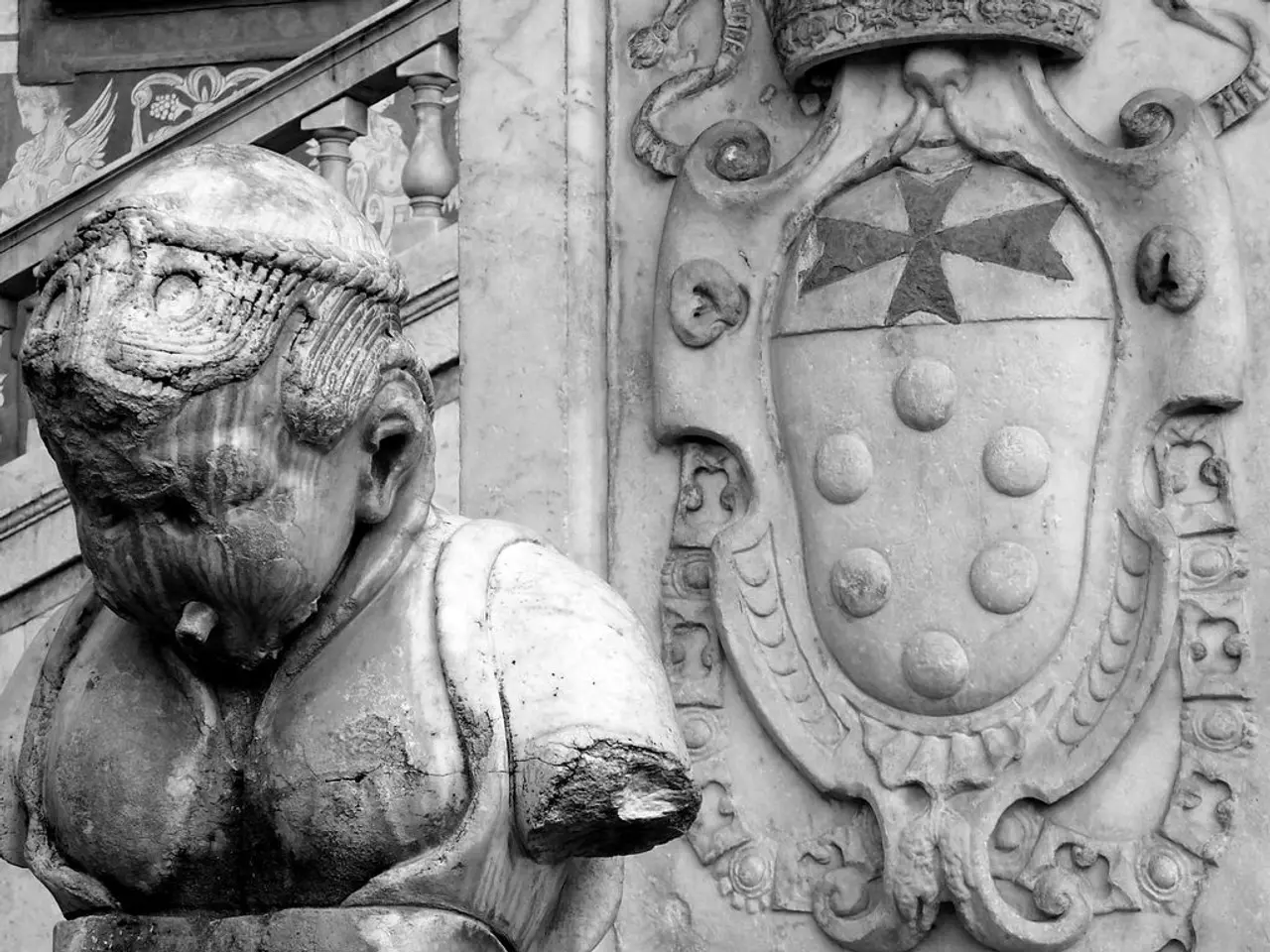Black artist Amoako Boafo questions the focus on pain and hardship in portrayals of Blackness, as he unveils his inaugural exhibition in London.
In the heart of London, from April 10-May 24, 2025, Gagosian Gallery will host Amoako Boafo's first solo exhibition in the city. Titled 'I Do Not Come to You by Chance', the exhibition showcases new paintings that delve into the artist's family history, creative life, and the influence of his hometown, Accra, Ghana.
Boafo's work is a vibrant visual storytelling that affirms and interrogates cultural and personal history. His portraits, created with finger painting, are deeply expressive and intimate, celebrating Black identity with poise and tenderness. The figures he portrays stare confidently at the viewer, smiling or observed in leisure, evoking autobiographical and collective memories.
The exhibition includes installation that brings in elements of paintings on view, such as a recreated courtyard that represents the influence Accra has had on Boafo and his career. This immersive experience aims to show that if there were more opportunities for artists, people wouldn't automatically think they have to go to Europe to make it.
Boafo collaborates with Glenn DeRoche on the new show, following their previous collaboration on dot.ateliers in Accra, Ghana. DeRoche was chosen for his understanding of Boafo's vision of creating environments that blend community and artistic practice.
'I Do Not Come to You by Chance' is a deeply personal process for Boafo, showcasing his development as an artist and a person, and presenting his culture and history as an essential part of that journey. The exhibition sees him sharing more of his life and story than he ever has, celebrating Accra, Ghana and the artistic community that supported his rise.
The exhibition aims to give back to the community that inspired and continues to support Boafo's work. It includes autobiographical elements referencing his upbringing and friends in Accra, and it celebrates Black stories as not only about pain or survival, but also about intimacy, celebration, relaxation, and play.
The relationship between literature and Boafo's artwork lies primarily in the narrative and representational qualities of his paintings, which convey rich stories about Black identity and experience, much as literature does through text. Boafo’s work functions as a vivid, visual storytelling that affirms and interrogates cultural and personal history, echoing literary themes of heritage, identity, and self-expression.
Visitors to 'I Do Not Come to You by Chance' will be immersed in Boafo's world, a world that affirms the beauty, complexity, and richness of Black identity and experience. This exhibition is a testament to Boafo's commitment to sharing his story and his culture, and it serves as a powerful reminder that Black stories are essential to our shared human narrative.
- The Gagosian Gallery's exhibition 'I Do Not Come to You by Chance' not only showcases Amoako Boafo's artistic talent but also delves into his lifestyle, offering a glimpse into his personal history and experiences through his vibrant and expressive portraits.
- For art enthusiasts with an interest in fashion-and-beauty and entertainment, the exhibit is a must-see, offering insights into Boafo's collaborations with Glenn DeRoche and the immersive installations that blend community and artistic practice.
- After attending 'I Do Not Come to You by Chance', visitors can immerse themselves in the expanded world of Boafo's art on social-media platforms, witnessing how his work resonates with themes found in literature, particularly those centered around heritage, identity, and self-expression, and exploring the home-and-garden elements inspired by Accra, Ghana. Travelers can continue this journey by visiting the city that has played a significant role in shaping Boafo's life and career, experiencing firsthand the influence of his hometown on his art and life's journey. Books that delve into similar sociocultural themes can also provide a deeper understanding of Boafo's work and its significance within the broader context of Black identity and history.




